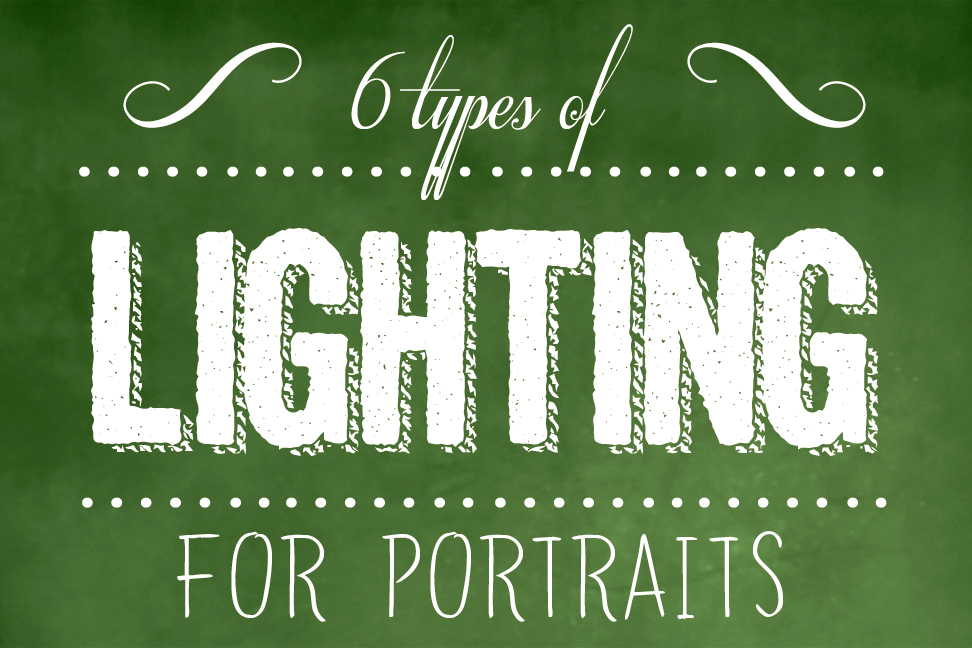Six Types of Portrait Lighting
It’s been a little while since I posted anything educational. So I thought I’d take today to talk a little about the importance of portrait lighting and the six most prominent types of portrait lighting. Lighting is the number one ingredient to creating a portrait. By using different lighting techniques you can create different moods and dramatically effect the quality of your images. In classical portraiture there are several things you need to control and think about to make a flattering portrait of your subjects, including: lighting ratio, lighting pattern, facial view, and angle of view. In today’s post, I’m going to outline the six different types of lighting that are most commonly used in portrait photography and how you can create them yourself to take your portraits to the next level!
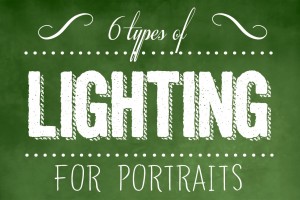
1. Split Lighting
Split lighting is exactly as the name implies – it splits the face exactly into equal halves with one side being in the light, and the other in shadow. It is often used to create dramatic images for things such as a portrait of a musician or an artist. Split lighting tends to be a more masculine pattern and as such is usually more appropriate or applicable on men than it is for women. As always, rules are not meant to be rigidly adhered to in the arts, but understanding the significance of them and when they are best utilized will help you to achieve stronger images.
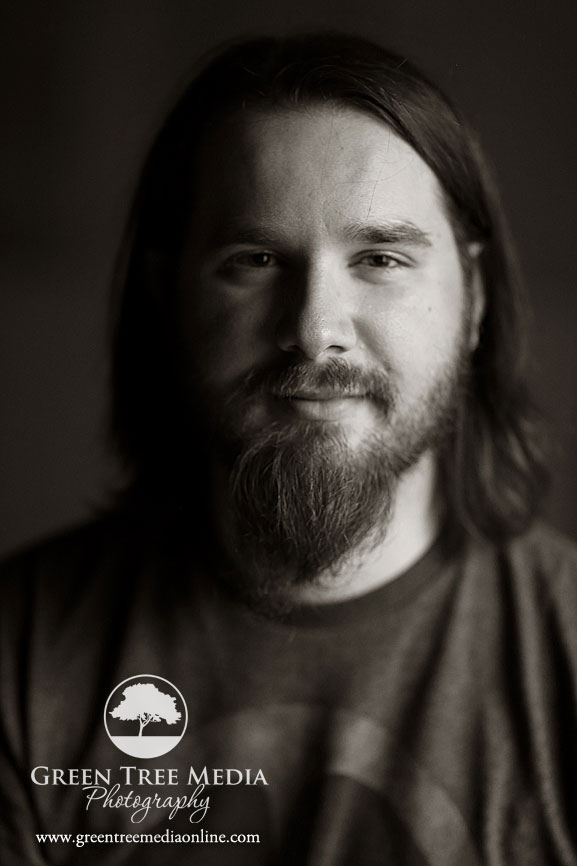
Split lighting is really simple to create! Just put the light source 90 degrees to the left or right of your subject, or even slightly behind their head. Where you place the light in relation to the subject will depend on the person’s face. Watch how the light falls on them and adjust accordingly. In true split lighting, the eye on the shadow side of the face does pick up light in the eye only. If by rotating their face a bit more light falls on their cheek, it’s possible their face just might not be ideal for split lighting.
2. Loop Lighting
Loop lighting’s name also indicates a bit about how the light falls on your subject. For this type of lighting your subject’s nose will create a small shadow on his/her cheek. To create loop lighting, the light source must be slightly higher than eye level and about 30-45 degrees from the camera. The amount of angle on the light is really dependent on the person’s face. With practice, you will learn to read people’s faces and be able to tell what will suit them best.
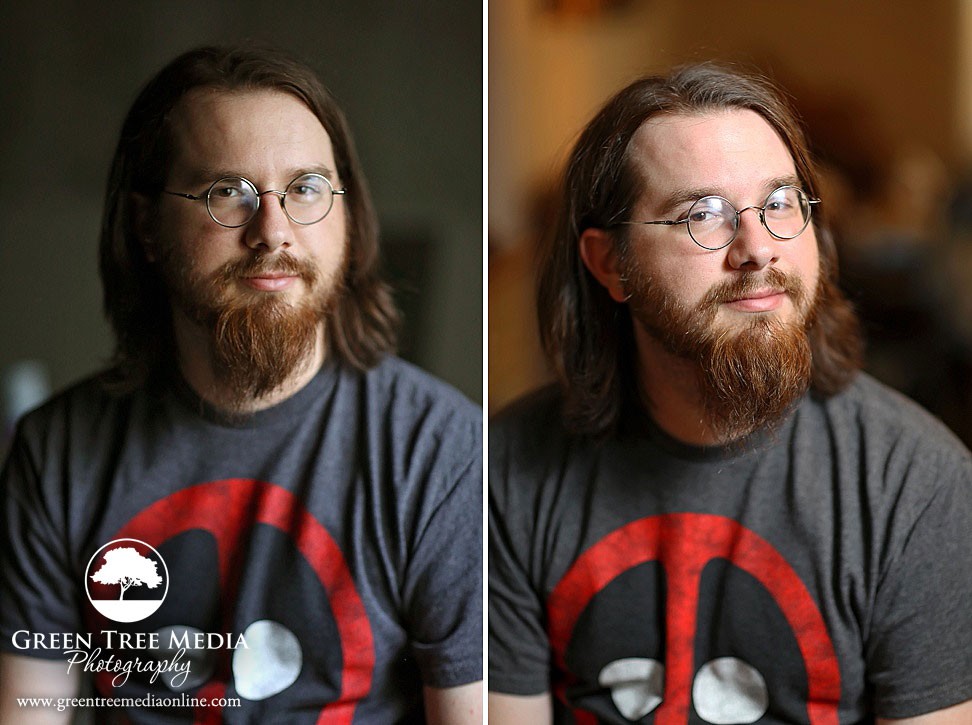
Looking at this image you will see where the shadow falls, and on the left side you can see a small loop of shadow from his nose. In loop lighting the shadow of the nose and that of the cheek do NOT touch. Keep the shadow small and slightly downward pointing, but be aware of having your light source too high which will create odd shadows and cause loss of the catch lights. Loop light is probably the most common or popular lighting pattern as it is easy to create and flatters most people.
3. Rembrandt Lighting
Rembrandt lighting is actually based on the painting style of the famous painter, Rembrandt, who this lighting technique was named after. Rembrandt lighting is most easily noted by the triangle of light on the cheek opposite the light source. Unlike loop lighting where the shadow of the nose and cheek do not touch, in Rembrandt lighting they do meet which, creates that trapped little triangle of light in the middle. To create proper Rembrandt lighting make sure the eye on the shadow side of the face has light in it and has a catch light, otherwise the eye will be “dead” and not have a nice sparkle. Rembrandt lighting is more dramatic, so like split lighting it creates more mood and a darker feel to your image. Make sure you use this in the right situations to create the perfect feel to your images.
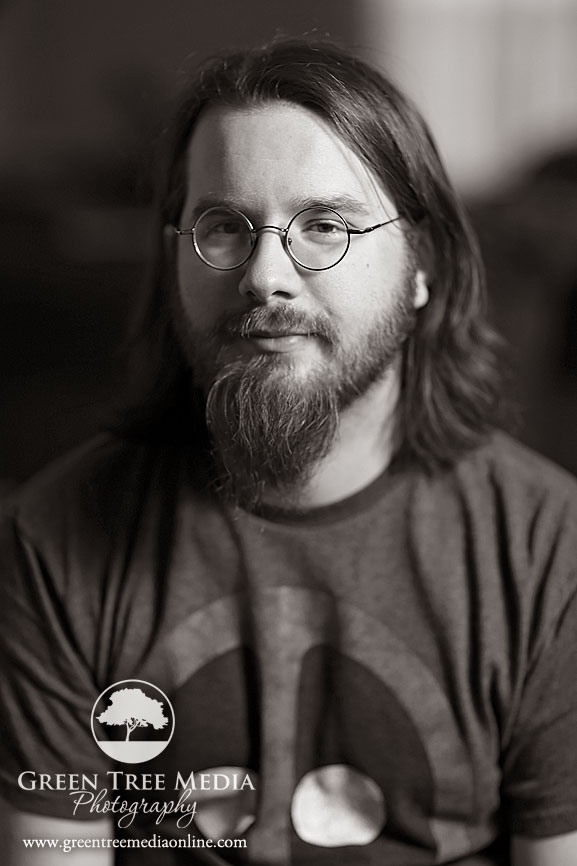 To create Rembrandt lighting, turn your subject slightly away from the light. Make certain to place the light above the top of their head so that the shadow from their nose falls down towards the cheek. Please note – not every person’s face is ideal for creating Rembrandt lighting. If they have high or prominent cheek bones it will probably work. If they have a small nose or flat bridge of the nose, it may be difficult to achieve. If you are using window light and the window goes down to the floor, you may have to block off the bottom portion to achieve this type of lighting. You can see in the above image that I wasn’t able to create a perfect triangle on his left cheek – but you can see a light shape formed on his left cheek just below his eye. This is the correct set up for the Rembrandt lighting – just not everyone’s facial features create that perfect shape.
To create Rembrandt lighting, turn your subject slightly away from the light. Make certain to place the light above the top of their head so that the shadow from their nose falls down towards the cheek. Please note – not every person’s face is ideal for creating Rembrandt lighting. If they have high or prominent cheek bones it will probably work. If they have a small nose or flat bridge of the nose, it may be difficult to achieve. If you are using window light and the window goes down to the floor, you may have to block off the bottom portion to achieve this type of lighting. You can see in the above image that I wasn’t able to create a perfect triangle on his left cheek – but you can see a light shape formed on his left cheek just below his eye. This is the correct set up for the Rembrandt lighting – just not everyone’s facial features create that perfect shape.
4. Butterfly Lighting
Butterfly lighting is aptly named for the butterfly shaped shadow that is created under the nose by placing the main light source above and directly behind the camera. The photographer is basically shooting underneath the light source for this pattern. It is most often used for glamour style shots and to create shadows under the cheeks and chin. It is also flattering for older subjects as it emphasizes wrinkles less than side lighting.

Butterfly lighting is created by having the light source directly behind the camera and slightly above eye or head level of the subject (depends on the person). It is sometimes supplemented by placing a reflector directly under their chin, with the subject themselves even holding it! This pattern really works best on those with defined or prominent cheek bones and a slim face. Someone with a round, wide face would look better with loop or even split to slim their face as it adds more depth and slims the face. This pattern is tougher to create using window light or a reflector alone. Often a harder light source like the sun or a flash is needed to produce the more defined shadow under the nose.
5. Broad Lighting
Broad lighting is not so much a particular pattern, but a style of lighting. Split Lighting, Loop Lighting, and Rembrandt Lighting can all be shot using either broad or short lighting depending on what’s most flattering for your subject and creates the right mood.
Broad lighting is when the subject’s face is slightly turned away from center, and the side of the face which is toward the camera is in the light. This produces a larger area of light on the face making it look broader, and a much smaller appearing shadowed side of the face. Broad lighting is sometimes used for “high key” portraits. Since this type of lighting makes a person’s face look wider it is sometimes used on someone with a very slim face to widen it. Most people however want to look slimmer, not wider so this type of lighting would not be appropriate for someone who is heavier or round faced.
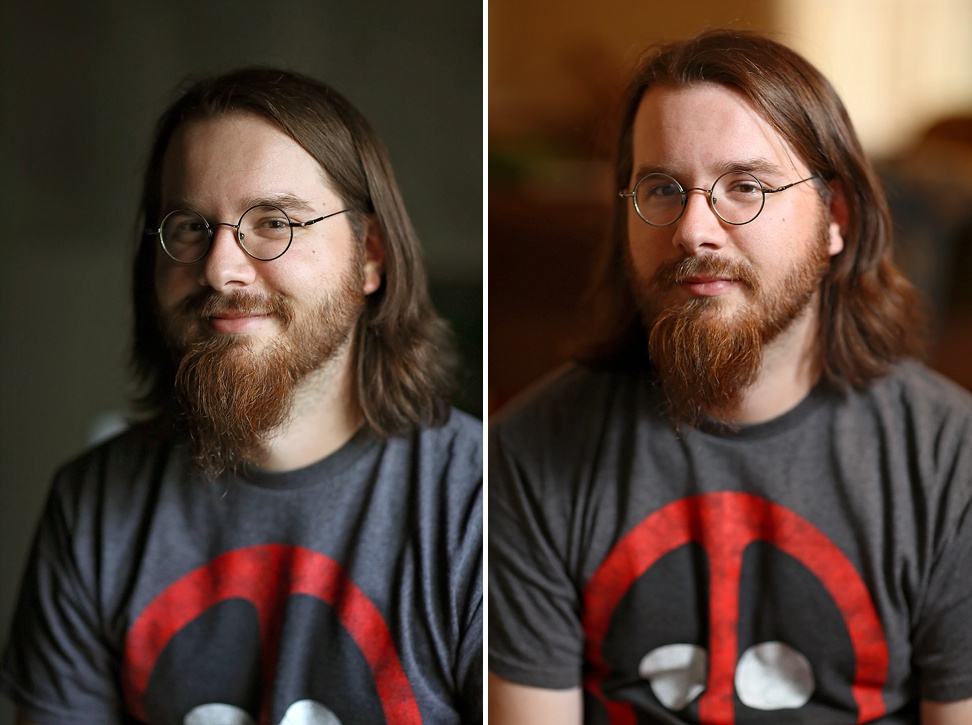
To create broad lighting the face is turned away from the light source. Notice how the side of the face that is towards the camera has the most light on it and the shadows are falling on the far side of the face, furthest from the camera. Simply put broad lighting illuminates the largest part of the face showing.
6. Short Lighting
Short lighting is the opposite of broad lighting. As you can see by the example here, short lighting puts the side turned towards the camera (that which appears larger) in more shadow. It is often used for low key, or darker portraits. It puts more of the face in shadow, is more sculpting, add 3D qualities, and is slimming and flattering for most people.

In short lighting, the face is turned towards the light source this time. Notice how the part of the face that is turned away from the camera has the most light on it and the shadows are falling on the near side of the face, closet to the camera. Simply put short lighting has shadows on the largest part of the face showing.
To Sum Up…
Once you learn how to recognize and create each of the different lighting patterns you can then learn how and when to apply them. By studying your subject’s face you will learn which lighting pattern will be best for them, and for the type of portrait and mood desired. Someone with a very round face that wants to appear slimmer in their portrait, will be lit very differently than someone that wants a promo shot for their band that makes them appear tough or edgy. Once you know all the patterns, how to recognize and master quality of light, direction of light and ratio then you will be well equipped to handle any challenge.
 Next post
Locations: Camp Camfield in Sullivan, IL
Next post
Locations: Camp Camfield in Sullivan, IL

